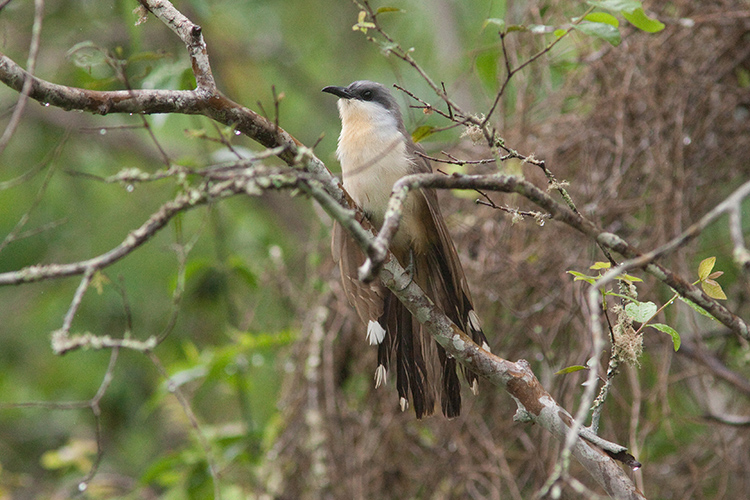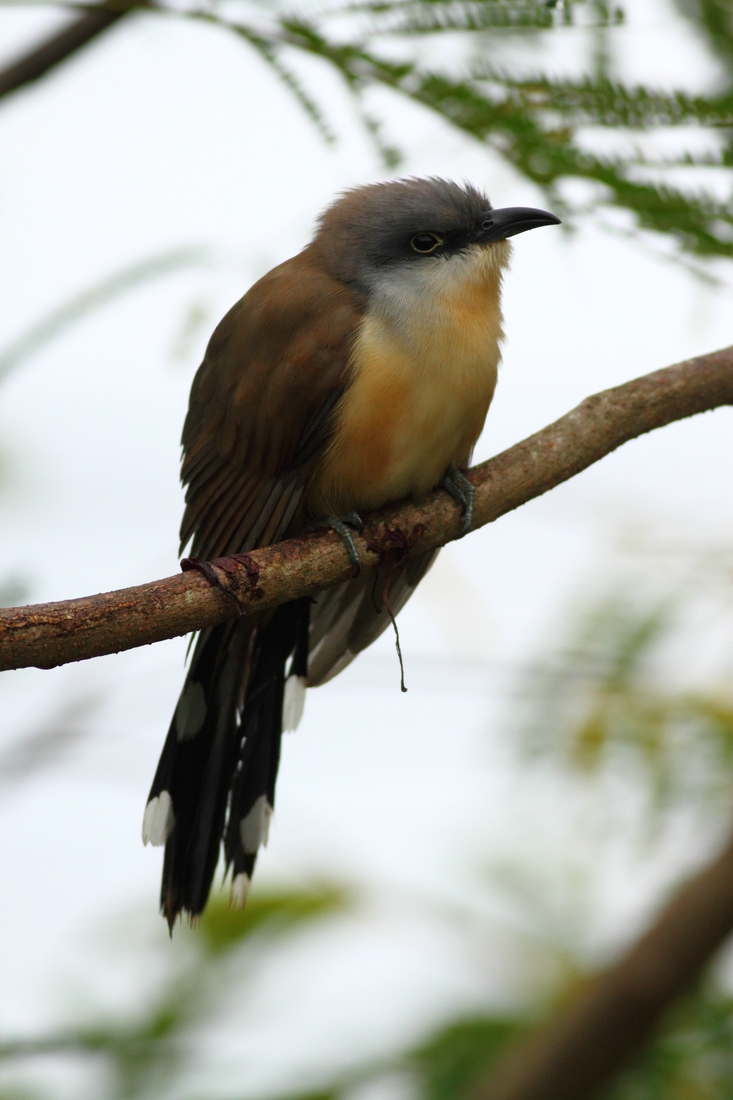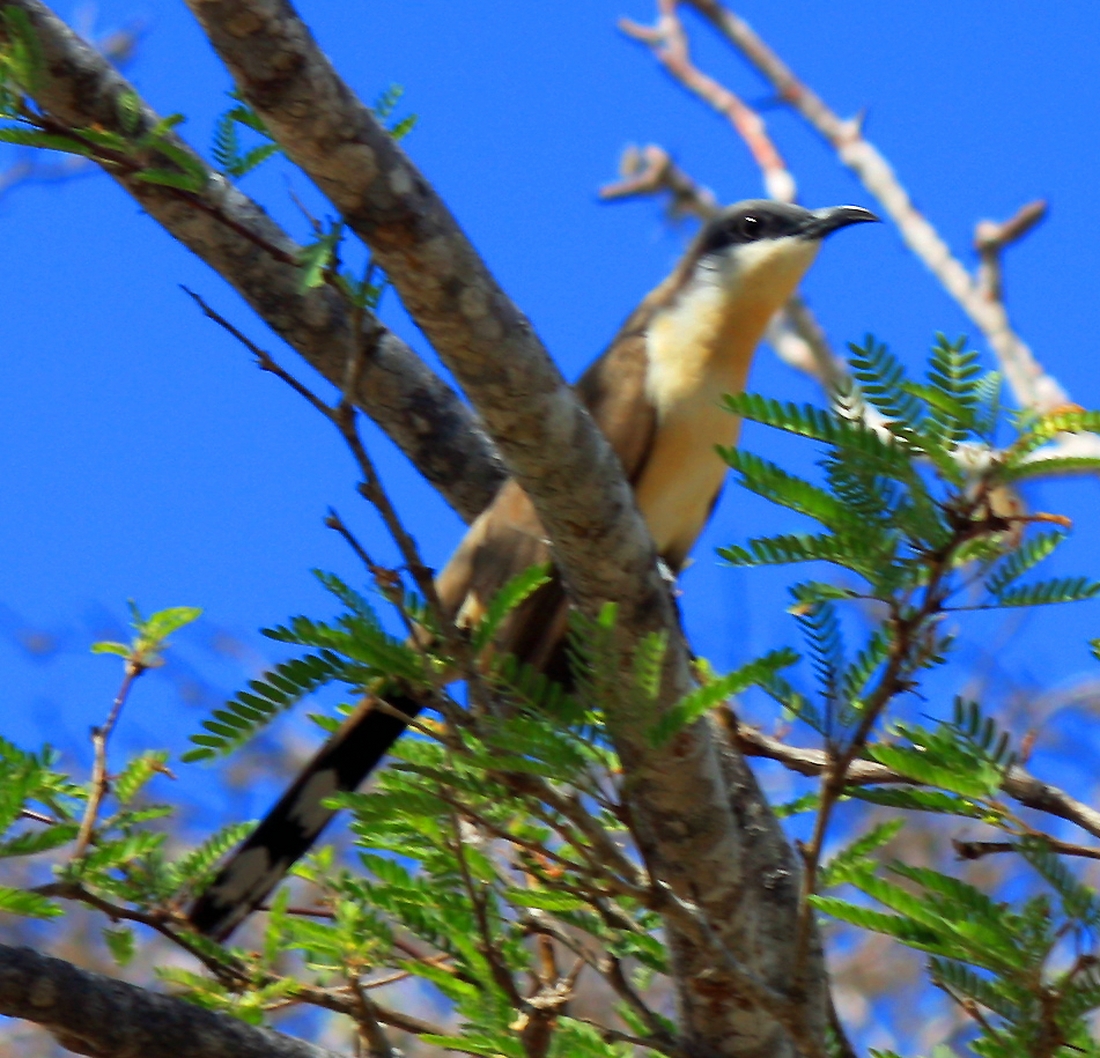Galapagos Species Database
The Galapagos Species Database shares the information about the species from our Natural History Collections.
Coccyzus melacoryphus
Aguatero, Cuclillo Piquioscuro, Dark-billed Cuckoo




It is a bird of about 25 cm, with long tail with white dots, gray back to brown, gray head with black around the eye. Below, slightly reddish white. Curved thick beak.
Possibly affected by Philornis (pupae found in nests), extent and the effects on its populations are unknown. As chicks are leaving the nest already at about 7 days, 2 weeks before they can fly, they may be an easy prey for cats.
Domain
Eukaryota
Kingdom
Animalia
Phylum
Chordata
Class
Aves
Order
Cuculiformes
Family
Cuculidae
Genus
Coccyzus
Species
melacoryphus
Taxon category: Accepted
Origin: Native
Preference for an altitude zone in Galapagos: Coastal zonera - humid zone
Habitat preferences: Mainly closed scrub and woodland. It can be found from the coast to the humid highland zone. Can be found from coast to humid highland.
Reproductive biology: Open cup nests, both parents incubate and chicks leave the nest approximately with 7 to 8 days, 2 weeks before they can fly.
Map of specimen collection localities or observation records for this species in our collections database.
Distribution: All larger islands.
- Alarcón, I. P. Navas, J., Cueva, J., Tabor, S., Arggüello, A., Macías, J., Sevilla, C., Fessl, B. & Cunninghame, F. (2023) Nesting of Dark-billed Cuckoo (Coccyzus melacoryphus) on Isabela Island, Galapagos, Ecuador. El Hornero 38: 53-62
- Bisconti, M. Landini, W., Bianucci, G., Cantalamessa, G., Carnevale, G. Ragaini, L. & Valleri, G. (2001) Biogeographic relationships of the Galapagos terrestrial biota: parsimony analyses of endemicity based on reptiles, land birds and Scalesia land plants. J. Biogeogr. 28: 495-510.
- Fessl, B. Couri, M.S. & Tebbich, S. (2001) Philornis downsi Dodge & Aitken, new to the Galapagos Islands (Diptera, Muscidae). Studia Dipterologic 8: 317-322.
- Fessl, B. Tebbich, S. (2002) Philornis downsi - a recently discovered parasite on the Galápagos archipelago - a threat to Darwin's finches? Ibis 144: 445-451.
- Freile, J.F. Santander, T., Jiménez-Uzcátegui, G., Carrasco, L., Cisneros-Heredia, D., Guevara, E., Sánchez-Nivicela, M., Tinoco, B. (2019) Lista Roja de las aves del Ecuador Quito, Ecuador. 97 pp.
- Harris, M.P. (1982) A field guide to the birds of Galápagos. Collins, London, 2nd ed., 160 pp.
- Harris, M.P. (1973) The Galápagos avifauna. Condor 75(3): 265-278.
- Hickin, N. (1979) Animal life of the Galapagos. Ferundune Books, Faringdon, U.K., 236 pp.
- Jiménez-Uzcátegui, G. Milstead, B., Márquez, C., Zabala, J., Buitrón, P., Llerena, A., et al. (2007) Galapagos vertebrates: endangered status and conservation actions. Galapagos Report 2006–2007. Charles Darwin Foundation, Puerto Ayora, p. 104–110.
- Jiménez-Uzcátegui, G. Betancourt, F. (2008) Avifauna vs automotores. Informe Galápagos 2007-2008. FCD, PNG & INGALA. Puerto Ayora, Ecuador. p. 111–114.
- Swarth, H.S. (1931) The Avifauna of the Galapagos Islands. Occ. Pap. Calif. Acad. Sci. 18: 1-299.
- Wiedenfeld, D.A. (2006) Aves, the Galapagos Islands, Ecuador. Check List 2006 2(2): 1-27.
- Wiedenfeld, D.A. (2006) Aves, The Galapagos Islands, Ecuador Check List 2(2): 1-27
You are welcome to download and use the information found in this page, acknowledging its source.
This page should be cited as follows:
"Galapagos Species Database, Coccyzus melacoryphus", dataZone. Charles Darwin Foundation, https://datazone.darwinfoundation.org/en/checklist/?species=5068. Accessed 25 December 2025.



Feeding type: Insectivorous
Also frugivore. Known to occasionally swallow fruits.